Genoa, the charming port city nestled along the Ligurian Sea, is often overshadowed by the grandeur of Rome, the romance of Venice, and the artistic allure of Florence. However, Genoa boasts its own unique beauty—a harmonious blend of rich history, diverse culture, and exceptional cuisine—that can captivate any traveler seeking something off the beaten path. If you’re looking for a unique Italian destination, one that’s less crowded yet full of remarkable experiences, Genoa might just be the perfect choice. Join Discovery to Wonders as we delve into this beautiful seaside city with a detailed travel guide.
1. Genoa: A Timeless Port City Full of Charm
Situated in Northern Italy, Genoa is not only the capital of the Liguria region but also one of the largest ports in the Mediterranean. With centuries of history, it was once a powerful maritime republic, a bustling trading hub, and the birthplace of renowned explorer Christopher Columbus. The legacy of its glorious past remains evident in the city’s streets and historic architecture.
Unlike the opulence seen in other famous Italian cities, Genoa exudes a quiet, classical charm that’s equally captivating. Strolling through its narrow cobblestone streets, known as caruggi, you’ll experience the slower, tranquil rhythm of life here. The quaint Renaissance and Baroque-era buildings and the revitalized old harbors paint a colorful and inviting picture of Genoa’s essence.
Genoa not only entices travelers with its historical allure but also impresses with a seamless blend of tradition and modernity. Alongside historic landmarks and architectural marvels, the city is home to contemporary art museums, vibrant shopping districts, and a lively nightlife scene. Its diversity makes it a compelling destination for tourists of all ages and interests.
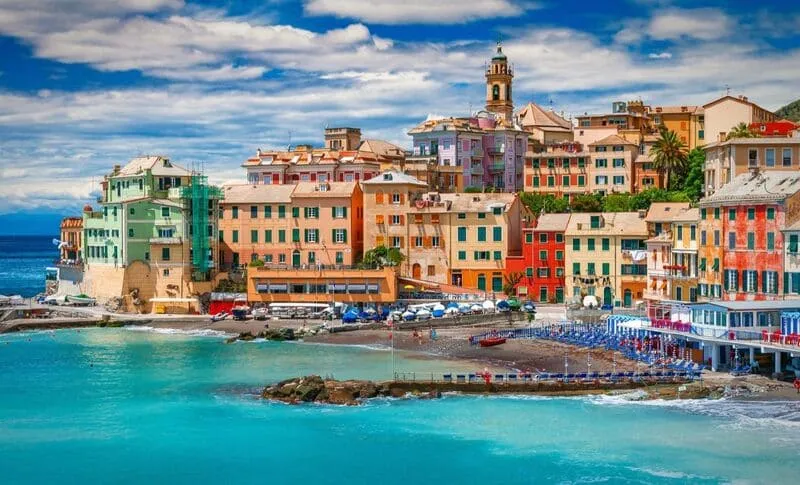
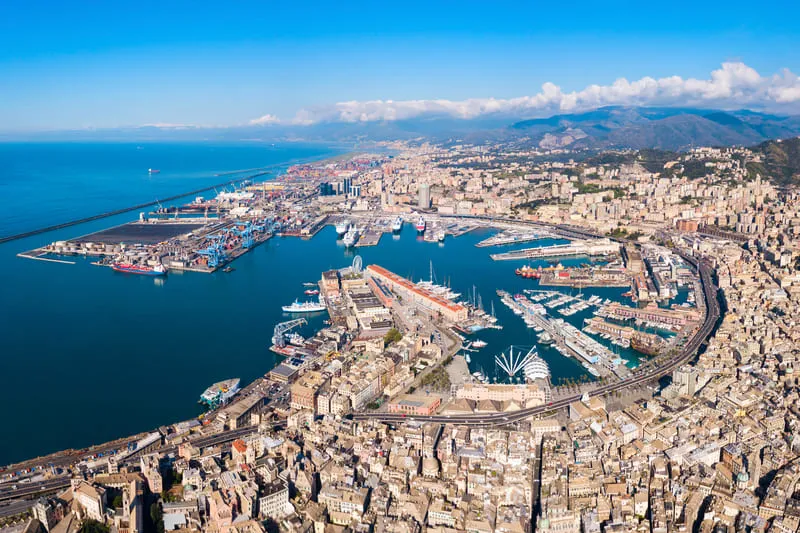
2. Useful Information for Your Complete Genoa Experience
To ensure a smooth and memorable trip to Genoa, dive into the essential information provided below:
2.1. Best Time to Visit Genoa
Genoa enjoys a pleasant Mediterranean climate with warm summers and mild winters. The ideal times to visit are April to June and September to October, when the weather is enjoyable with sunny days perfect for outdoor exploration. These months also mark Genoa’s off-peak tourism season, giving you a quieter, more peaceful experience.
Summer (July – August) is the high season, featuring hotter weather and pristine, turquoise seas ideal for water sports and beach outings. However, be prepared for higher prices and crowded attractions. For lovers of vibrant summer vibes, this period is still appealing.
Winter (November – March) brings cooler temperatures and occasional rain, offering a serene Genoa more suited to cultural, historical, and culinary exploration—a treat for travelers seeking calm and romance.
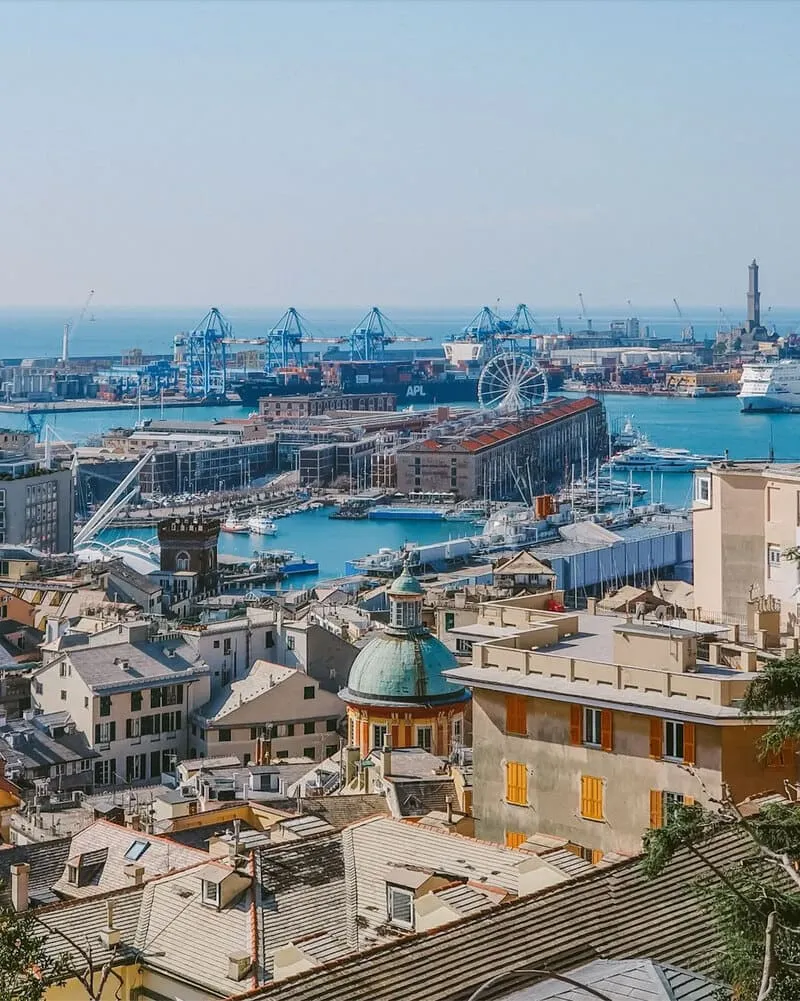
2.2. Getting to Genoa
The most common way to reach Genoa from Vietnam is by airplane. Genoa’s main gateway is Genoa Cristoforo Colombo Airport (GOA), yet there are no direct flights from Vietnam. Travelers typically connect through major European cities such as Rome, Paris, Frankfurt, or Istanbul.
Flights from Vietnam to Genoa, including layovers, usually take between 18 and 24 hours depending on the airline and transit city. Prices vary by season, carrier, and itinerary, so booking at least 2-3 months in advance and choosing off-peak travel times can help reduce costs.
If you’re visiting Genoa from other Italian or nearby European cities, train travel is an excellent option. Genoa’s main railway station, Genova Piazza Principe, connects to other major cities in Italy and Europe.
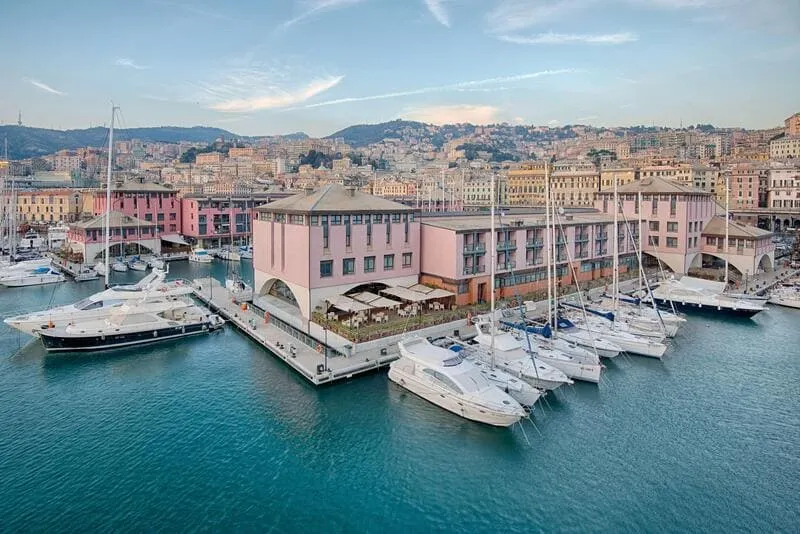
2.3. Getting Around in Genoa
Despite its compact size, Genoa offers a variety of convenient transport options. Here are some suggestions for navigating the city during your visit:
- Public Transportation: Genoa’s public transport network includes buses, the metro system, and even public boats operated by AMT.
- Buses: Extensive routes cover most city neighborhoods. Buses run until late night (approximately 1 AM), and tickets can be purchased at bus stations, tobacconists, or via the AMT app.
- Metro: Though small, Genoa’s metro system provides fast access to key tourist sites. Metro tickets can be bought at stations.
- Public boats (Navebus): A unique way to explore Genoa from the sea, Navebus routes connect coastal points like Villa Pallavicini Park.
- Walking: Genoa’s historic caruggi alleys make walking a delightful option for exploration. Comfortable shoes are recommended as hilly roads and cobblestone paths abound.
- Taxis and Ride-Sharing Services: Taxis and platforms like Uber and Bolt provide reliable but pricier options for city travel.
- Car Rentals: Renting a car or moped offers the freedom to explore the Liguria region. However, central Genoa parking can be difficult and expensive.

3. Must-Have Experiences in Genoa
Genoa has plenty of attractions and activities to immerse you in its charm. Here are the top experiences you shouldn’t miss:
3.1. Wander the Old Town and Discover the Maze of Caruggi
Genoa’s Old Town (Città Vecchia) is its historic heart and proudly listed as a UNESCO World Heritage site. Its defining feature is a network of labyrinthine alleys called caruggi. In these narrow streets, tall medieval buildings, quaint shops, and cozy cafes create a captivating atmosphere like no other.
Pay a visit to Christopher Columbus’ House, the birthplace of the famed explorer, and climb the Spianata Castelletto for stunning panoramic views over the city. Walk along Via Garibaldi and Via Balbi to marvel at Baroque-style palaces built by Genoese aristocrats.
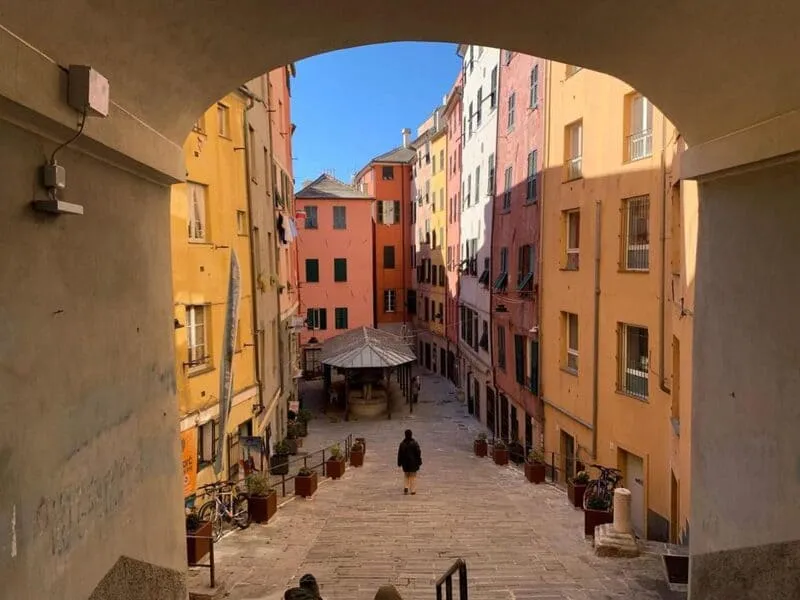
3.2. Dive into Art at World-Class Museums
Genoa is a cultural hub, boasting an impressive collection of museums and art galleries. Art enthusiasts should visit:
- Palazzo Rosso, Palazzo Bianco, and Palazzo Tursi: These aristocratic palaces along Via Garibaldi house exquisite art collections ranging from paintings and sculptures to antique furniture.
- Galleria d’Arte Moderna: Features Italian and international artwork from the 19th century to modern times.
- Museo d’Arte Orientale Edoardo Chiossone: Home to one of Europe’s best Japanese art collections, including sculptures, ceramics, paintings, and samurai armor.
- Museo di Storia Naturale Giacomo Doria: Showcases natural history specimens including animals, plants, minerals, and fossils from across the globe.
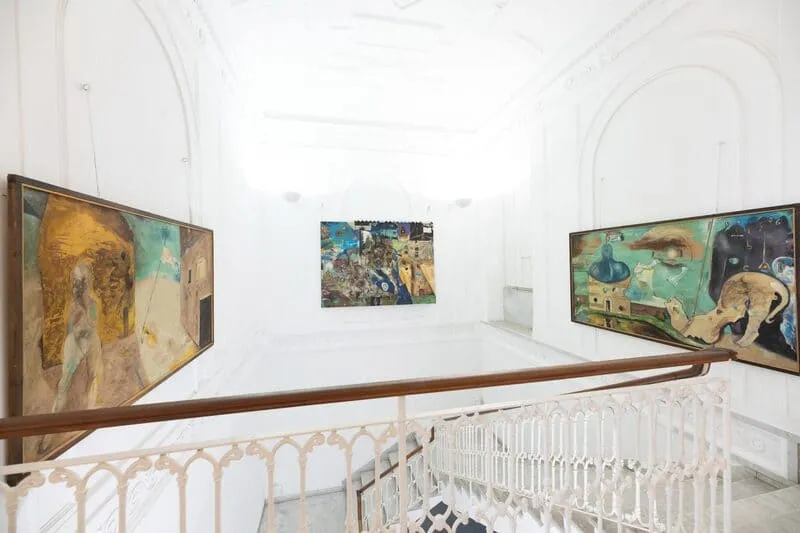
3.3. Experience the Sea at Genoa Aquarium
The Genoa Aquarium (Acquario di Genova) is one of Europe’s largest and most advanced aquariums. Featuring over 70 tanks and thousands of marine species from around the globe, the aquarium offers visitors a mesmerizing oceanic journey, perfect for families with children.
From playful dolphins and formidable sharks to vibrant coral reefs, the aquarium’s displays dazzle and educate. It also serves as a center for oceanic research and environmental awareness efforts.

3.4. Enjoy the Vibrant Nightlife at Piazza De Ferrari
Piazza De Ferrari is the heart of modern Genoa and thrives as a buzzing nightlife destination. Surrounded by landmarks like Carlo Felice Theatre and the Doge’s Palace, the iconic square is illuminated by its grand fountain and vibrant with activity.
In the evening, the square comes alive with locals and visitors gathering at nearby restaurants, bars, and cafes. It’s the perfect spot to unwind, mingle with Genoese residents, and soak in the dynamic atmosphere.
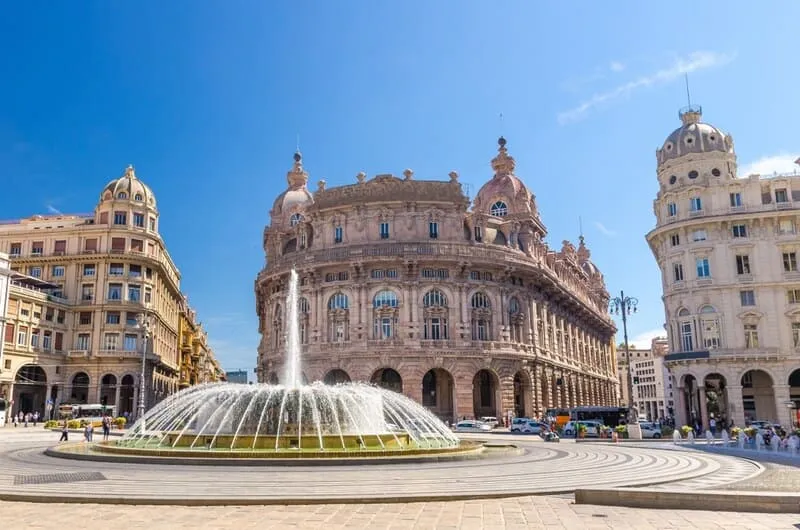
4. Savor Genoese Cuisine: A Blend of Sea and Hills
No trip to Genoa is complete without exploring its culinary treasures. Featuring flavors from both sea and land, Genoese cuisine is a true delight.
Genoa is the birthplace of Pesto, a vibrant green sauce made from basil, garlic, pine nuts, Parmesan, and olive oil. It’s typically enjoyed with pasta like trofie, trenette, or linguine, or as a topping for focaccia bread.
Other staples include focaccia, a flatbread with variations like plain, onion-topped, or olive-studded. Pair it with morning coffee or savor it as a snack.
Seafood dishes like ciuppin (fish soup), fritto misto di mare (fried mixed seafood), and cappon magro (seafood salad) are must-try items. Don’t miss farinata, a chickpea pancake, or pansoti con salsa di noci, pasta served with walnut sauce.
Visit traditional eateries (trattoria), local taverns (osteria), or food markets (mercato) to relish Genoa’s authentic flavors.
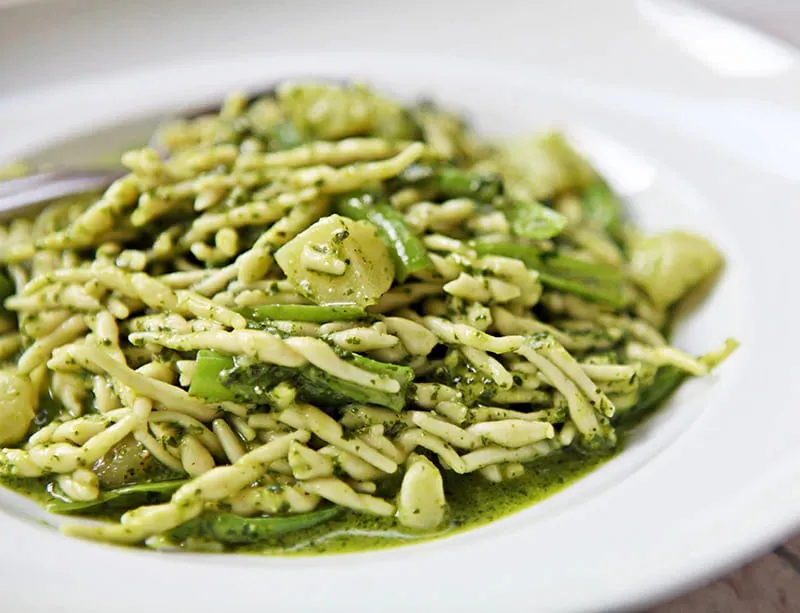
Genoa is full of surprises—an Italian gem waiting to be discovered. With this guide, we hope your trip to this beautiful port city will be unforgettable and extraordinary. Wishing you remarkable moments in Genoa!